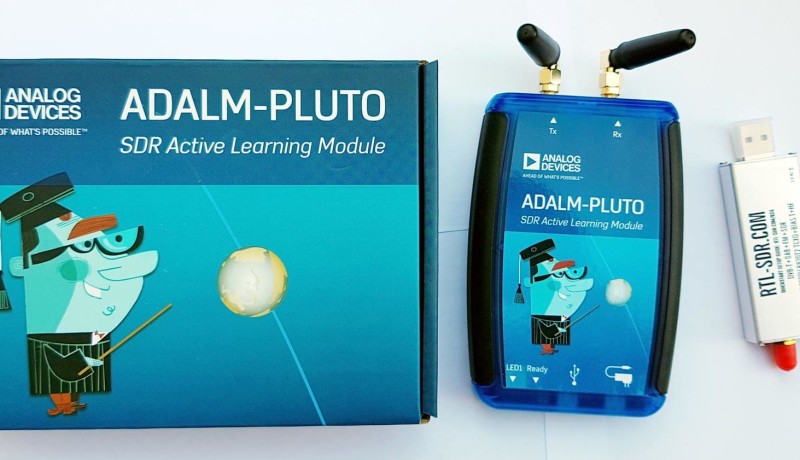CQ-CQ ADALM-Pluto SDR Active Learning Module
April 02, 2018
on
on

Analog Devices’ ADALM-PLUTO SDR Active Learning Module (PlutoSDR) introduces the fundamentals of software-defined radio (SDR), radio frequency (RF), and wireless communications to electrical engineering students. Designed for all levels and backgrounds, students can use this self-contained, portable RF lab in an instructor-led or self-led setting.
When used with a laptop or tablet, the PlutoSDR serves as a personal portable lab that augments learning in the classroom. PlutoSDR supports the MATLAB® and Simulink® software packages. These software packages are claimed by AD “to feature an innovative graphical user interface (GUI) enabling students to learn faster, work faster, and explore more.”
Using the ADALM-PLUTO SDR Active Learning Module, students develop a strong foundation in real-world RF and communications as they pursue technology, science, or engineering degrees. The ADALM-PLUTO SDR Active Learning Module features independent transmit and receive signals capable of operating in full-duplex. The PlutoSDR can acquire and generate RF analog signals from 325 MHz to 3.8 GHz tuning range at up to 61.44 MSPS. Enabled by libiio drivers, PlutoSDR supports OS X®, Windows®, and Linux®, allowing students to learn on a range of devices.
Features
The ADALM-Pluto kit is available from Mouser. Kit includes: Analog Devices PlutoSDR active learning module; two antennas (824 MHz to 894 MHz / 1710 MHz to 2170 MHz); one 15-cm SMA cable; one USB cable.
When used with a laptop or tablet, the PlutoSDR serves as a personal portable lab that augments learning in the classroom. PlutoSDR supports the MATLAB® and Simulink® software packages. These software packages are claimed by AD “to feature an innovative graphical user interface (GUI) enabling students to learn faster, work faster, and explore more.”
Using the ADALM-PLUTO SDR Active Learning Module, students develop a strong foundation in real-world RF and communications as they pursue technology, science, or engineering degrees. The ADALM-PLUTO SDR Active Learning Module features independent transmit and receive signals capable of operating in full-duplex. The PlutoSDR can acquire and generate RF analog signals from 325 MHz to 3.8 GHz tuning range at up to 61.44 MSPS. Enabled by libiio drivers, PlutoSDR supports OS X®, Windows®, and Linux®, allowing students to learn on a range of devices.
Features
- Portable self-contained RF learning module
- Cost-effective experimentation platform
- Based on Analog Devices AD9363 Highly Integrated RF Agile Transceiver and Xilinx® Zynq Z-7010 FPGA
- RF coverage from 325 MHz to 3.8 GHz
- Up to 20 MHz of instantaneous bandwidth
- Flexible rate, 12-bit ADC and DAC
- One transmitter and one receiver, half or full duplex
- MATLAB® Simulink® support
- GNU Radio sink and source blocks
- Libiio, a C, C++, C#, and Python API
- USB 2.0 Interface
- High quality plastic enclosure
The ADALM-Pluto kit is available from Mouser. Kit includes: Analog Devices PlutoSDR active learning module; two antennas (824 MHz to 894 MHz / 1710 MHz to 2170 MHz); one 15-cm SMA cable; one USB cable.
Read full article
Hide full article


Discussion (0 comments)